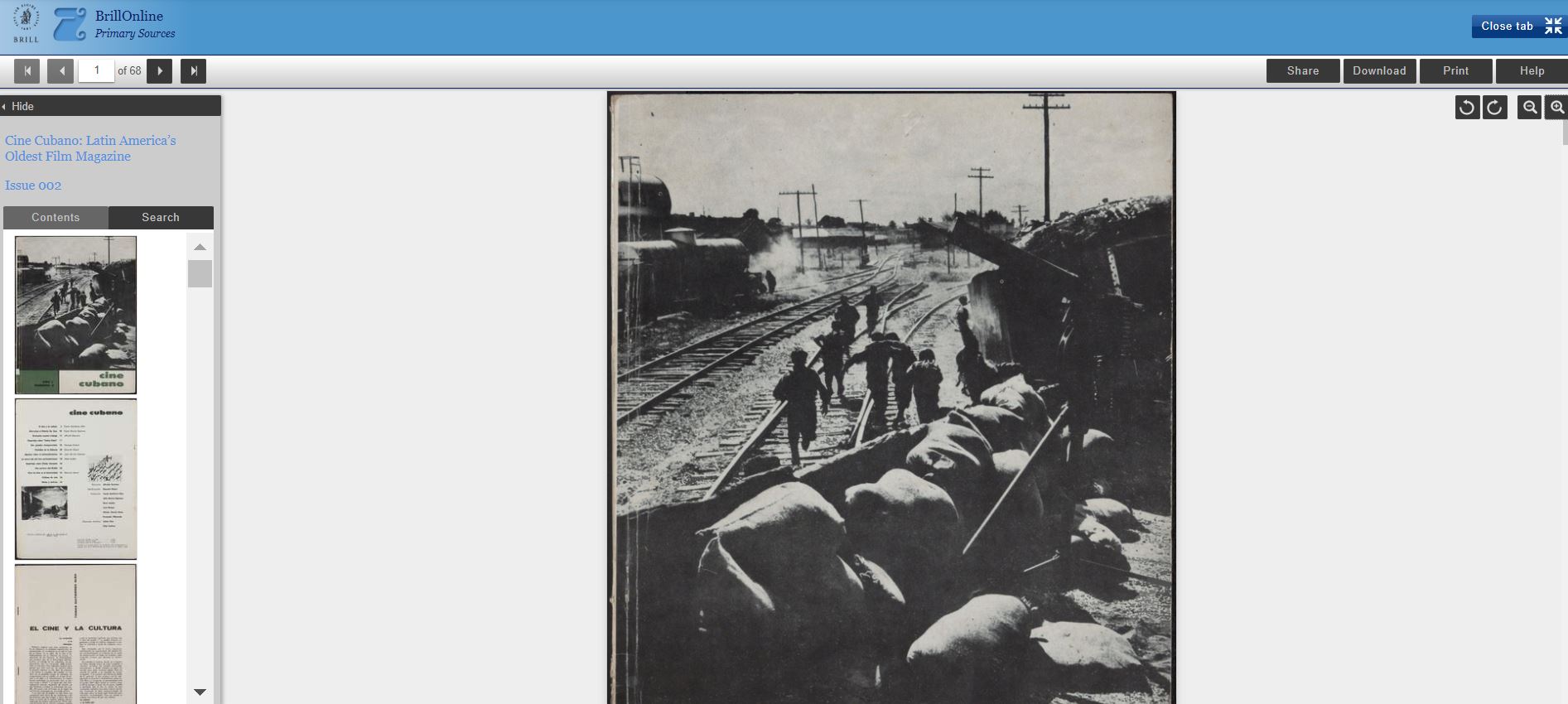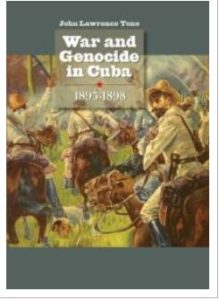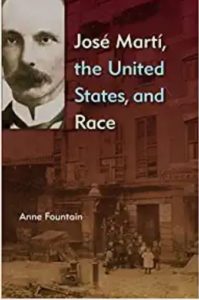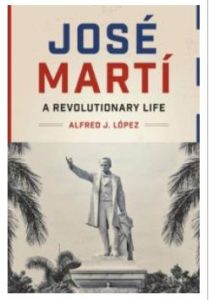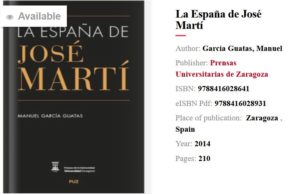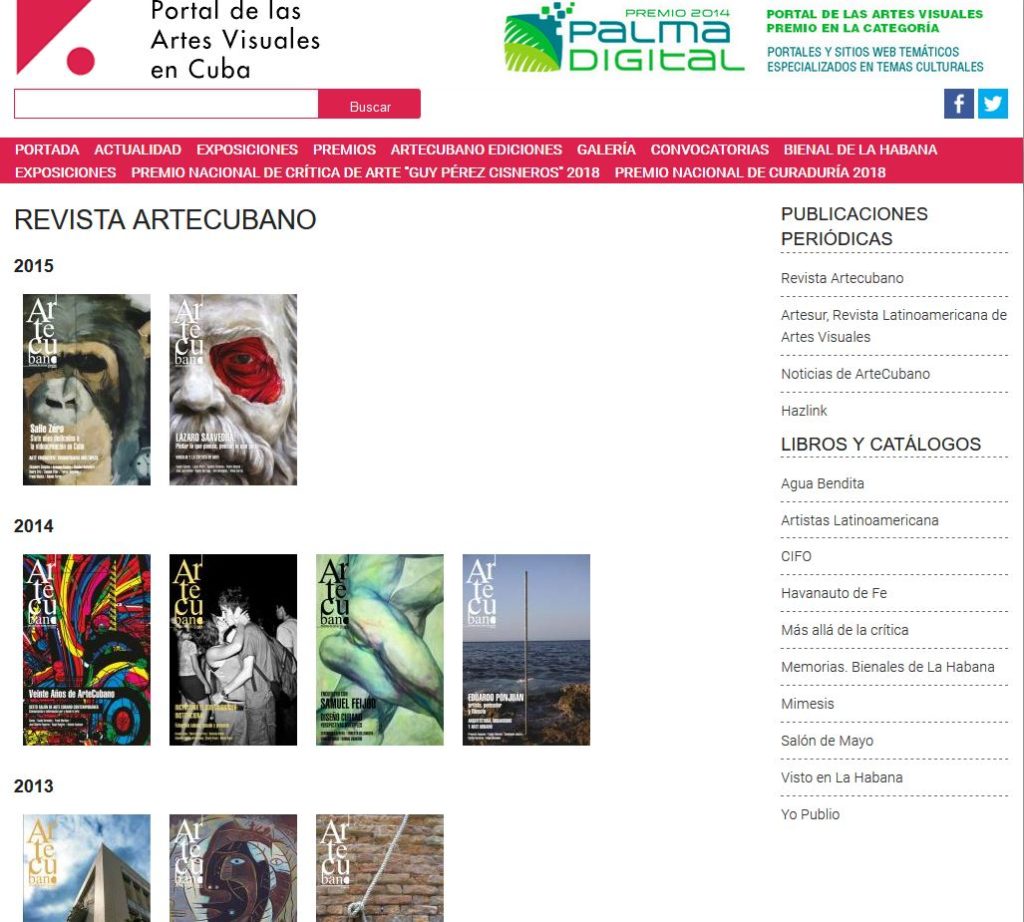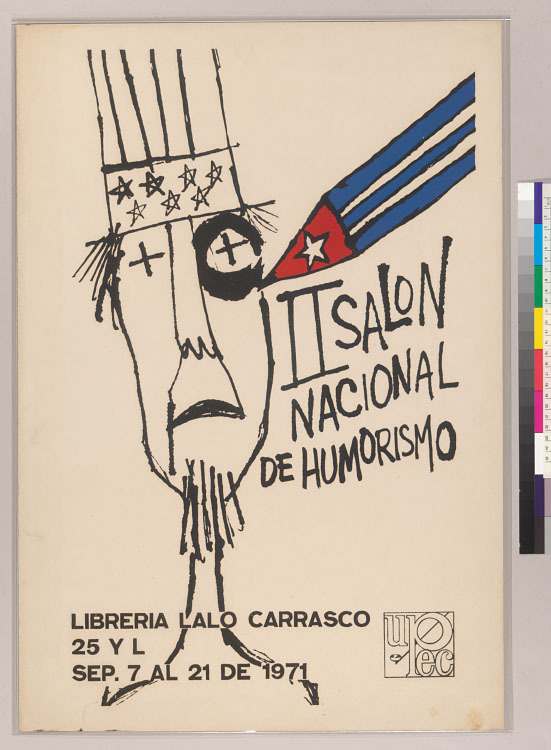Tag: Cuba
Trial of Cine Cubano ending on March 29 2024
Cine Cubano is a journal that provides valuable insights into Cuban revolutionary cinema and Latin American cinema. It has over 200 issues from 1960 to 2019, covering six decades of film theory, techniques, and reviews. The journal has now been digitized and made available online for the first time, providing unprecedented access to film scholars and students. All 205 print issues have been scanned and included in this new online collection. The scanning was done at the ICAIC Film Institute in Havana, Cuba, where the journal originated. Overall, this is an important new digital resource for studying the history of Cuban and Latin American cinema. The online availability makes decades of film knowledge more accessible.
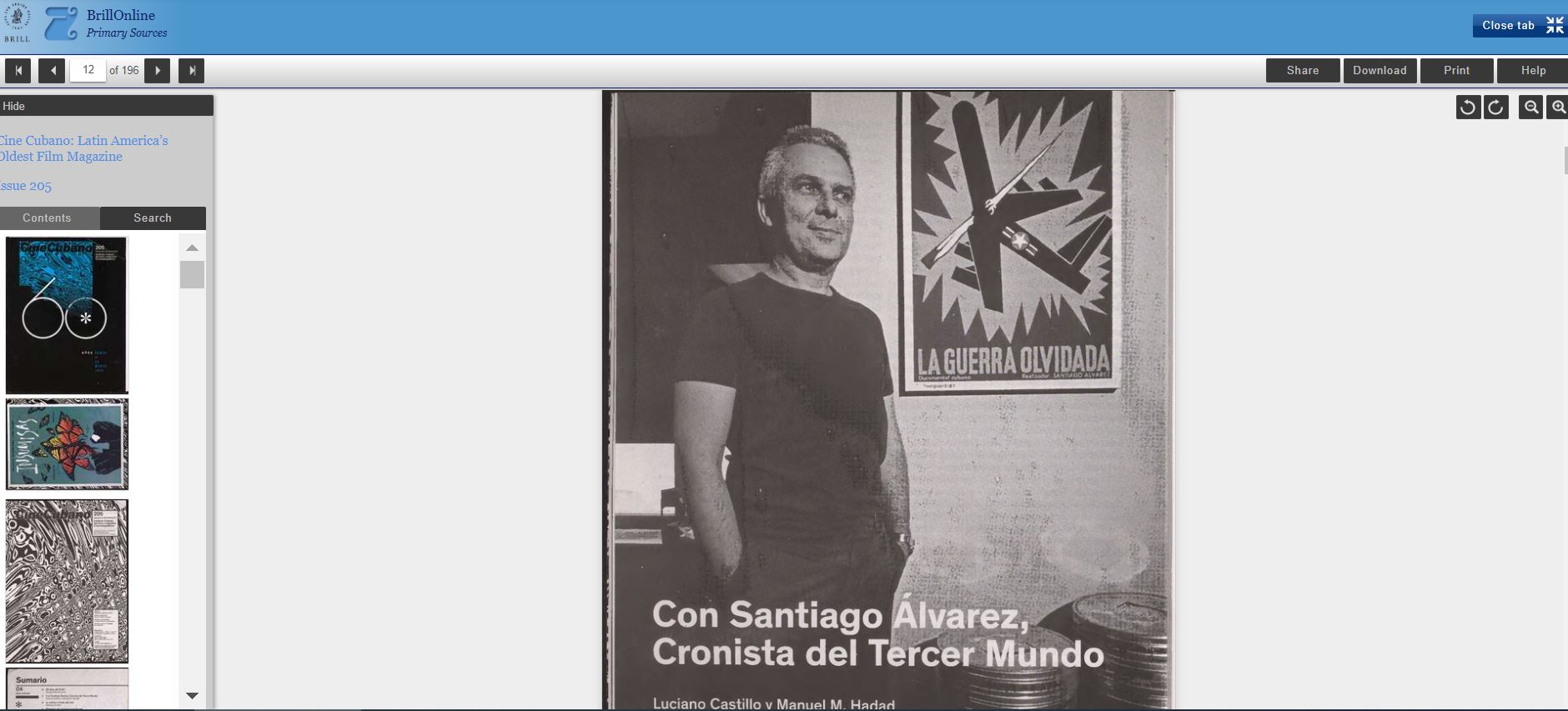
Cuba: Grito de Yara (10 October 1868)
Each year, on 10th October, the Cubans all over the world commemorate the call for national independence. The “Grito de Yara,” is one of many important events in the complex historical trajectory of Cuba that unleashed the potential of the national consciousness through rebellions against the Spanish imperial authorities. The full text of the “Manifiesto de la Junta Revolucionaria de la Isla de Cuba” can be read by clicking on the link here.
At UC Berkeley Library, despite our West Coast location and our Pacific Rim orientation, we have a large collection of books that will enlighten our readers about what does “Grito de Yara” means. The other essential Open Access source is dLOC (Digital Library of the Caribbean) where one can browse documents related to the “Grito de Yara.“
Below are some titles that might of interest to the readers of this blog. Since we believe in the equitable access, I am providing some links to the full-text of these items.
Below is a clip from a film,
Primary Sources: Cuban Periodicals: Cultural Magazines Published by Casa de las Américas, 1960–2009

[Library Trial] Cuban Periodicals: Cultural Magazines Published by Casa de las Américas, 1960–2009
The Library has set up a thirty-day trial of Brill’s database of Cuban Periodicals. It might be accessed after authenticating here: http://ucberk.li/cubanperiodicals
Cuban Periodicals: Cultural Magazines Published by Casa de las Américas, 1960–2009

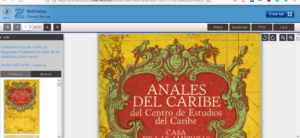
125th anniversary of death of José Martí-the Cuban Intellectual, Author and Revolutionary!
JOSÉ MARTÍ – Serie Maestros de América Latina (Fair Academic Use Only, Source: UNIPE, Argentina)
Each nation-state has its own heroes whose actions often contribute to the narrative of mythopoetics of what it means to be a nation. Sometimes, songs are sung in their honor and monuments jut up like totems, arches, and pyramids of the antiquities. While the foundational myths and narratives often remain magical, the real actions of these enlightened individuals lead to the achievement of something larger. José Martí is one such shining example.
The Cuban poet, a revolutionary philosopher, and Latin American intellectual of his times José Martí died one hundred and twenty-five years ago during the Battle of Dos Ríos on May 19, 1895. He led fight against the Spanish. From the Library of Congress hosted narrative, one notes that he lived in New York from 1881 and 1895 and a curious statement summarizes the imperialist tendencies that this nation has existed as follows, “He wrote everything from a magazine for children (Edad de Oro) to poetry (Versos sencillos 1891), to essays on the nature of the United States which he admired for its energy and industry as well as its notable statesmen, particularly the framers of the Constitution. However, he denounced its imperialist attitude toward its southern neighbors.”
Below are some of the electronic books that one can read after authenticating using proxy or VPN.
For works by José Martí at UC Berkeley Library see here.
In memoriam: Roberto Fernández Retamar
As the librarian for the Caribbean and Latin American Studies, and as one of the supporters of the UC-Cuba Initiative, I have continued to dedicate significant time and resources in developing our Caribbean collections. This morning, I found while reading an online post by Juventud Rebelde a post about yesterday’s passing of the Cuban poet Roberto Fernández Retamar. We have been collecting several of his poetry books over the past many years. These can be found here in Oskicat. Below is his discourse on Caliban and later as I understood as Antropofagia later on from Brazilian Studies lense.
I remembered at that moment, his poem that he dedicated to the daughters. The words as I recall were as follows,
“Hijas: muy poco les he escrito,
y hoy lo hago de prisa.
Quiero decirles
que si también este momento pasa
y puedo estar de nuevo con ustedes,
en el sillón, oyendo el radio,
cómo vamos a reírnos de estas cosas,
de estos versos y de estas botas,
y de la cara que ponían algunos,
y hasta del traje que ahora llevo.”
The words about the fragility of time resonated with me, and it reminded me that as a librarian for the collection development, I do have upon me a huge responsibility to think of long term collection development that will ensure a certain level of parity with other well-endowed Ivy League libraries. While the data-driven collection development depends on administrative use of certain facets of data to justify academic decisions, the collections that we have today were built by my predecessors who have passed on the torch. I am honored and blessed to be at UC Berkeley that has provided me an Indian-American a chance to evolve as a librarian for Latin American collections. In a large group of SALALM members, I am genuinely a minority person.
Thank you Roberto Fernández Retamar for reminding me today of the fragility of time!
Primary Sources: Cuban Culture and Cultural Relations, 1959-, Part 2: Writers
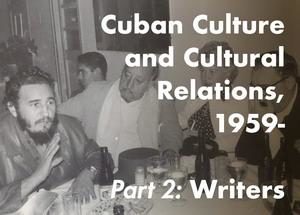 The Library has acquired the second part of the “vertical archive” of Casa de las Americas. This collection of unpublished manuscripts, letters, notes, and other ephemera, offers a unique insight into the activities of more than a thousand writers and artists who visited La Casa. Famous writers from the twentieth century form the core of the collection, including Jorge Amado, Mario Benedetti, Roberto Bolaño, María Luisa Bombal, Jorge Luis Borges, Alejo Carpentier, Aimé Césaire, Julio Cortázar, Roque Dalton and Gabriel García Márquez, to name but a few. Some of the leading writers from the nineteenth century are also represented, including José Martí and the pioneer Brazilian novelist Machado de Assis. In addition to writers, the archive includes files on painters, such as Roberto Matta and David Alfaro Siqueiros, filmmakers, such as Santiago Álvarez and Glauber Rocha, and musicians, such as Chilean singer-songwriter and political activist Víctor Jara.
The Library has acquired the second part of the “vertical archive” of Casa de las Americas. This collection of unpublished manuscripts, letters, notes, and other ephemera, offers a unique insight into the activities of more than a thousand writers and artists who visited La Casa. Famous writers from the twentieth century form the core of the collection, including Jorge Amado, Mario Benedetti, Roberto Bolaño, María Luisa Bombal, Jorge Luis Borges, Alejo Carpentier, Aimé Césaire, Julio Cortázar, Roque Dalton and Gabriel García Márquez, to name but a few. Some of the leading writers from the nineteenth century are also represented, including José Martí and the pioneer Brazilian novelist Machado de Assis. In addition to writers, the archive includes files on painters, such as Roberto Matta and David Alfaro Siqueiros, filmmakers, such as Santiago Álvarez and Glauber Rocha, and musicians, such as Chilean singer-songwriter and political activist Víctor Jara.
Artecubano : revista de artes visuales.
As the librarian for Latin American and the Caribbean collections, I find it important to also carry out some sort of retrospective collection development and contribute to the creation of a holistic collection of journals of importance from the region. One such journal is Artecubano. We have several issues of this title, but we do not have a complete run. I am glad to announce that through my contacts in Cuba, I was able to get all of the issues through 2015. I will be able post the pictures of these issues once they get here. I am so excited for having such a rewarding vocation!
Event- Maps and More: Sugar and Sand: Tracing Cuba’s Shifting Export Economy in Maps
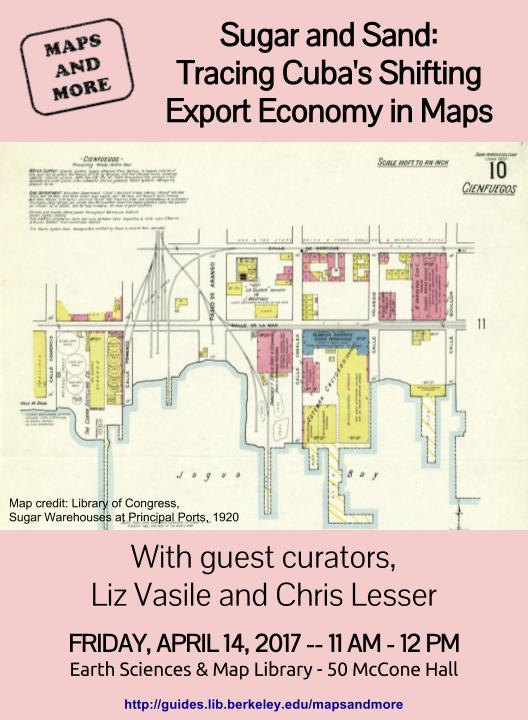
The Library’s Cuban Poster Collection
More than a decade ago, the Library digitized close to 350 original cultural and political posters from Cuba acquired by retired librarian Carlos Delgado through the exchange program he set up with the José Martí National Library of Cuba in 2000. All are searchable by title, keyword or publisher in the Colección de Carteles Cubanos online database and in the Online Archive of California (OAC) with another 200 slated to be added this year. The posters capture the broad range of national and international campaigns of Fidel Castro’s regime but also a unique perspective on the world through promotional art for exhibitions, performances, festivals, and conferences held on the embargoed Caribbean island nation in the last four decades of the twentieth century.
